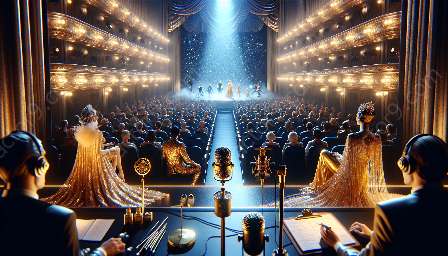Voice acting is a challenging and rewarding craft that requires more than just talent and creativity. It also demands a deep understanding of vocal anatomy and physiology to fully harness the potential of the voice. In this article, we will explore why it is essential for voice actors to grasp the intricacies of vocal anatomy and physiology, and how this knowledge can be applied through vocal exercises for voice actors.
Understanding Vocal Anatomy and Physiology
Vocal anatomy and physiology refer to the physical structures and functions of the vocal apparatus. This includes the vocal cords, larynx, diaphragm, and resonating chambers, all of which play a crucial role in producing and modulating the voice. By comprehensively understanding these components, voice actors can develop greater control, range, and expression in their performances.
Ensuring Vocal Health and Longevity
Understanding the anatomy and physiology of the voice enables voice actors to practice good vocal hygiene. They can learn to recognize and address potential strain or overuse, preventing vocal fatigue and injury. By applying techniques such as proper breathing and posture, voice actors can preserve their vocal health and prolong their careers.
Enhancing Vocal Techniques
Vocal exercises for voice actors are deeply rooted in an understanding of vocal anatomy and physiology. Through targeted exercises, voice actors can develop strength, flexibility, and control in their vocal apparatus. This can lead to improved diction, resonance, and emotional range in their performances, ultimately making them more versatile and captivating actors.
Character Development and Authenticity
When voice actors have a thorough understanding of vocal anatomy and physiology, they can more accurately embody the nuances of different characters. By knowing how the physical aspects of the voice contribute to a specific sound or expression, voice actors can bring authenticity and depth to their portrayals, creating compelling and believable characters.
Vocal Exercises for Voice Actors
Vocal exercises form an essential part of a voice actor's training regimen. They encompass a wide range of activities that target various aspects of vocal production and performance. Some common vocal exercises for voice actors include:
- Breathing exercises: Focusing on proper breath support and control to enhance vocal power and endurance.
- Resonance exercises: Developing resonance in different parts of the vocal tract to create varied and engaging vocal qualities.
- Articulation exercises: Improving diction and clarity for precise and articulate speech.
- Inflection exercises: Practicing variations in pitch, tone, and emphasis to convey emotional subtleties.
- Range exercises: Expanding vocal range to access a broader spectrum of vocal expression.
By regularly engaging in these exercises, voice actors can refine their vocal skills, expand their capabilities, and maintain vocal health throughout their careers.
In Conclusion
Understanding vocal anatomy and physiology is indispensable for voice actors seeking to excel in their craft. It empowers them to care for their instrument, refine their techniques, and breathe life into their characters. Combined with dedicated vocal exercises, this knowledge forms the foundation for a successful and sustainable career in voice acting.




























